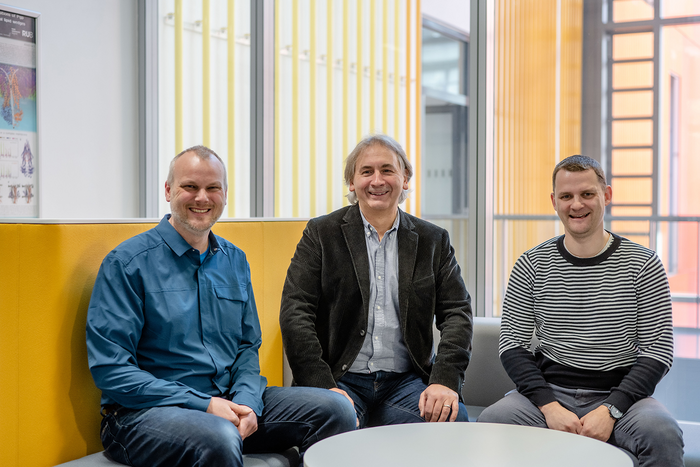For the energy transition to succeed, we require environmentally friendly energy carriers. Hydrogen could be one such source if it could be produced on a large scale in a carbon-neutral way. Researchers are relying on enzymes that occur naturally in certain algae and bacteria, to name just a few. “Due to their high conversion rates, they serve as a biological blueprint for the design of future hydrogen catalysts,” explains lead author Andreas Rutz. But their unique active site, known as the H-cluster, degrades on contact with oxygen. “This is the greatest hurdle in hydrogen research,” says Rutz.

Credit: RUB. Marquard
For the energy transition to succeed, we require environmentally friendly energy carriers. Hydrogen could be one such source if it could be produced on a large scale in a carbon-neutral way. Researchers are relying on enzymes that occur naturally in certain algae and bacteria, to name just a few. “Due to their high conversion rates, they serve as a biological blueprint for the design of future hydrogen catalysts,” explains lead author Andreas Rutz. But their unique active site, known as the H-cluster, degrades on contact with oxygen. “This is the greatest hurdle in hydrogen research,” says Rutz.
Oxygen resistance increases considerably
The recently discovered [FeFe] hydrogenase called CbA5H is the only known enzyme of its class that can protect itself from oxygen by a molecular protection mechanism. However, a fraction of the hydrogenase is also destroyed in the process. To remedy this problem, the researchers specifically exchanged a building block of the enzyme. This genetic modification meant they could significantly increase the oxygen resistance of the hydrogenase.
The teams used site-directed mutagenesis in combination with electrochemistry, infrared spectroscopy and molecular dynamics simulations to better understand the kinetics of the transformation at the atomic level. “We intend to use our findings to understand how local modifications of protein structure can significantly influence protein dynamics and how they can effectively control the reactivity of inorganic centres,” explain Lars Schäfer and Ulf-Peter Apfel.
Journal
ACS Catalysis
DOI
10.1021/acscatal.2c04031
Method of Research
Experimental study
Subject of Research
Not applicable
Article Title
Increasing the O2 resistance of the [FeFe]-hydrogenase CbA5H through enhanced protein flexibility
Article Publication Date
28-Dec-2022




